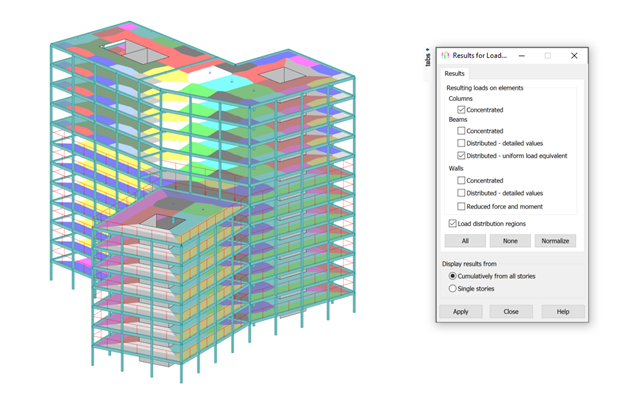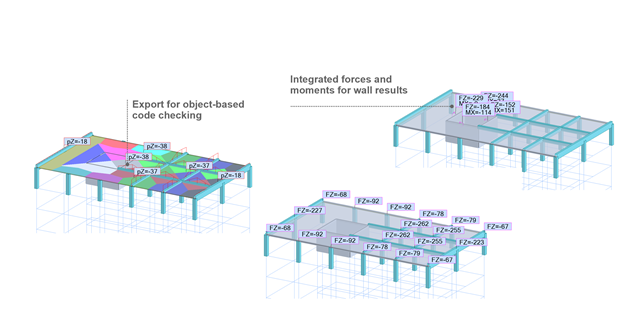The Load Takedown Method distributes loads from floors onto beams, columns, and walls. The load is transferred down from the upper storey to the storey below and down to the foundation.
This analysis is mostly oriented on fast, yet informative analysis in early design stages and where gravity loads are essential for building design decisions.
The three primary objectives for this new capability are to enable engineers to:
- Determine reactions on foundations in very early design stages when design work on the upper part of the building is still being done.
- Understand building behavior to determine the best column layout distribution.
- Get loads transferred to individual objects so that object-based code design is possible using traditional engineer handy design code tools or even spreadsheets.

The Load Takedown Method provides structural analysis results in the following forms:
- Resulting loads on individual structural objects such as beams, columns, and walls coming from the floor load distribution, which can be used as a load input in external design applications.
- Internal forces in beams and columns based on obtained resulting loads which can be consumed in internal design modules.
- Reactions on supports.

See more: